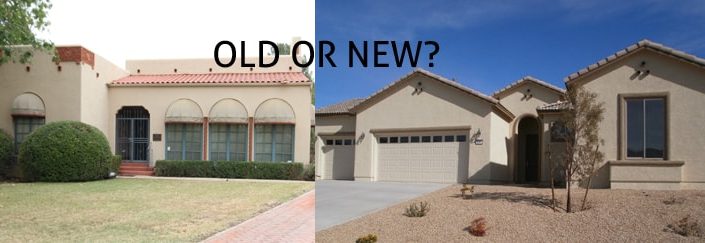
Are Older Homes Better Built Than New Homes?
When home shopping in the Phoenix area, or just about anywhere for that matter, the biggest factor for most buyers is location. To get into the best neighborhoods in town, we sometimes sacrifice elsewhere – size, bedrooms, upgrades, etc. But let’s forget about all that for a second, and talk about another potential factor– the age of a home. Like any other technology, construction methods and safety requirements change over time. For the better you’d think, right? Well….
Today, one of the hottest housing markets is Central Phoenix. Central Phoenix is older by nature, so many of the homes were built in the 50’s & 60’s, or even earlier. Comparing the construction of these older homes to a newer home, there’s one of two mindsets you probably have:
- Newer is better, older needs more work and newer construction is a better home.
Or
- They don’t make ’em like they used to! Today’s houses are built with cheap products!
Well both are right, sort of.
First off, older homes were commonly built with brick, or slump block. Not only are these walls extremely durable, but they are naturally great insulators. These homes are solid and stand the test of time. Additionally termites are a common nuisance in Arizona. Since termites feed off of wood, the older homes built with block are virtually unaffected by termites. A couple points to the older homes in these categories.
Electrical Systems in older homes
Where older homes lose a couple points is in infrastructure – electric and plumbing. In the 1950’s a house may have had one TV – IF they were affluent. With just a few other basic appliances in the house, there was no need for a high powered electrical system. Today, we use multiple TV’s, microwaves, large refrigerators, computers, phones, fans, hair dryers, hot tubs, the list goes on and on. These items use WAY more power than homes in the 50’s and 60’s were built for. When buying an older house, it’s important to check and see if the electrical system has been upgraded to current standards. If not, make sure to add it to your budget!
Plumbing systems in older homes
In the 1950’s & 1960’s, homes were traditionally plumbed with galvanized steel. Unfortunately, steel rusts over time. In many older homes, if the water has been turned off for a period of time, you may expel some rust colored water before the water turns clear – this is a telltale sign you have galvanized pipes. By the 1970’s almost all contractors had switched to copper piping.
The main drain lines of 1950’s and 60’s homes were traditionally made with cast iron or galvanized steel. Much like steel, cast iron is also susceptible to rusting. This puts a life expectancy of around 40-50 years. A typical home inspection does NOT include a camera scope to view the condition and material of the drain lines. This is a separate inspection that can be performed on a home being purchased.
Starting in the mid 1970’s drain lines were installed using ABS plastic as a low cost, easy to repair alternative. Unfortunately, the material proved to not be as durable as once thought. Now PVC is the drain pipe of choice and is the best option for your new home, or when in need of replacement.
Framed homes
Unlike the block walls in older homes, the majority of today’s homes are built from wood framing. This costs less to build than other methods. As we all know, if there is a cheaper way to do it, that’s the way it’s done! There is common debate as to whether or not framed homes will stand the test of time. We know brick and mortar buildings can last hundreds of years, if not longer, but will wood really sustain for hundreds of years and be structurally sound?
Modern Day Plumbing
Today’s modern homes are all plumbed with either copper or PEX. PEX is a synthetic material which is flexible, easily installed, and lasts a lifetime. More and more builder are adopting PEX as the flexibility and cost are better than that of copper. One thing to note, PEX is not to be confused with Polybutylene piping (known as PB),
which another synthetic flexible piping. This was commonly used in the 1980s through the mid 1990’s. Its use stopped after installations started leaking and bursting, many homes in Arizona still use PB piping. Keep a look out for PB plumbing on your inspection. While not a deal breaker, it’s good to know what type of plumbing is in the house and it may be worth a secondary inspection to confirm it’s in good functioning shape.
The comparison between old homes and new can go on and on. New homes have modern floor plans, old homes have lower ceilings and smaller rooms. Older homes usually come with bigger yards, newer homes usually with smaller yards. There’s a hundred things to compare, but understanding some of these key safety features is an important piece to know when considering buying an older home. The rest is all preference!
Search Homes for Sale
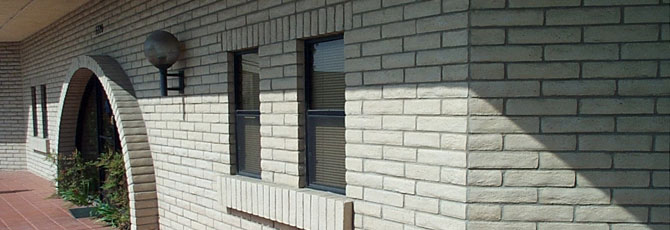
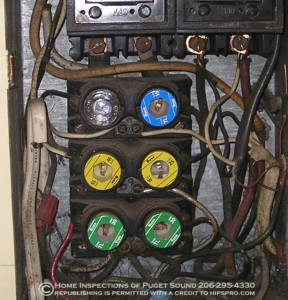
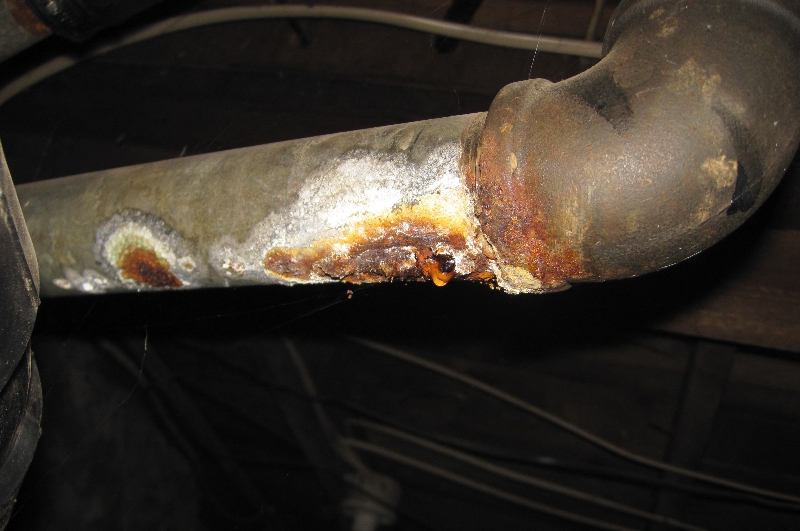
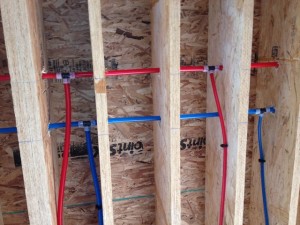

Leave a comment